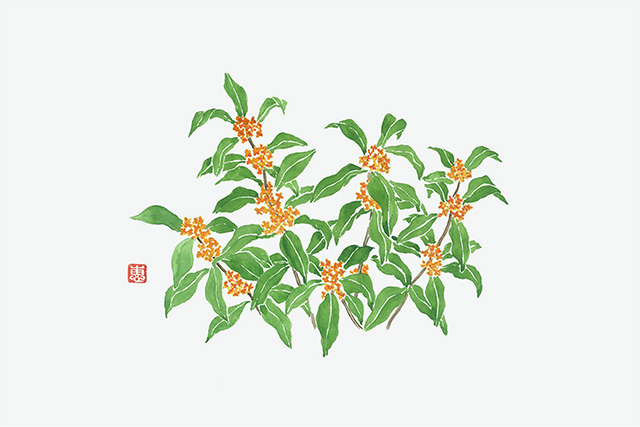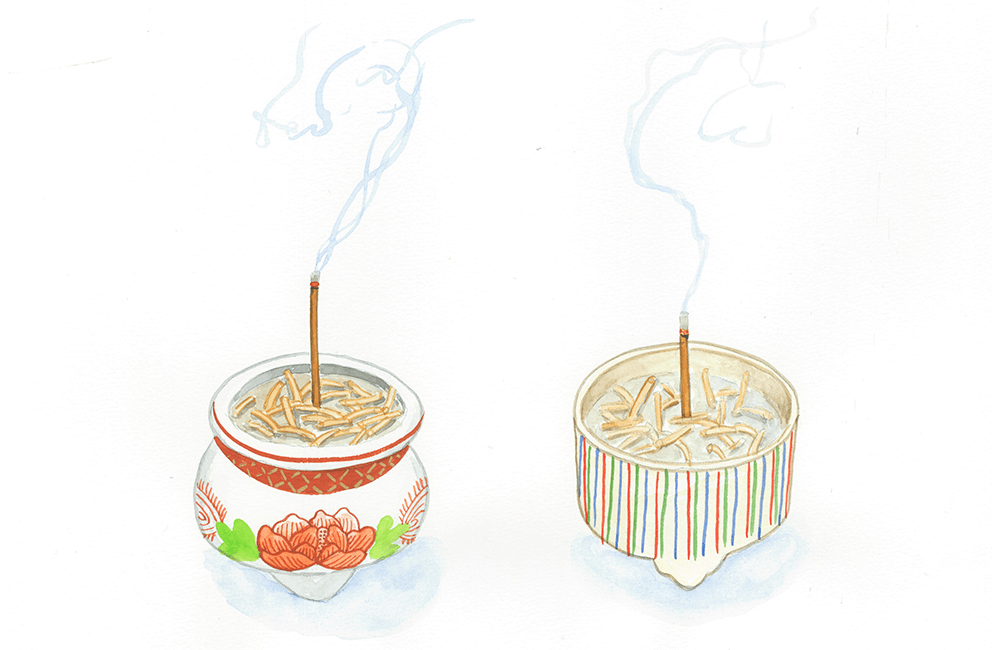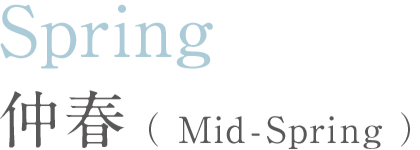

It was when I was in high school, that I became clearly aware of “incenses” for enjoying fragrances.
My brother, who had entered university, traveled to Kyoto and bought Indian incenses.
One would think that he could have bought Japanese incenses in Kyoto, but he was a teenager of his generation.
My brother was the very last of the hippie generation.
The small cone-shaped incense could be picked up between my fingertips and when it was lit it released a lot of smoke.
The fragrance was not extreme but quite strong.
I felt that I could not think straight in that smoke.
Perhaps I had be hit by a culture shock.
After that, I became interested in incenses.
I came to know not only Indian incenses but also Japanese incenses.
I would timidly walk into incense shops and enjoyed one fragrance after another.
And little by little I collected the attractive tools displayed in the shops:
Incense burners, incense burner ash, charcoal tablets and silver mica plates.
Incense tools and wrapping are always elegant.
To a person always fighting time, they looked like items from a different world to me
And what a fragrance!
Unlike that strong deluding fragrance of those Indian incenses, it was a deep soothing fragrance that reached far into the depth of a person.
Until I was in my thirties, incenses were a spontaneous pleasure
But in my forties, I lost my father, and in my fifties, I lost my mother,
And incenses became a daily routine.
Until then, I had no Buddhist alter in my house, and even as an adult I knew little about them.
That changed drastically.
Every day, I offer water, tea, and flowers, and I light the candle and an incense.
So this is what Buddhist alters were all about.
After my mother passed away, I renewed my incense tools, including my burner and bell:
A set of small “mugiwara-te” (striped) incense burner and holder, etc.
The cup for water offerings is almost as small as a small sake cup.
But I am very fond of this set.
Given the small size of the burner, I use short incense sticks.
I have another small burner.
This is the one I had used for a while after my father passed away.
The Buddhist alter was at my mother’s house, so I burned an incense stick in front of my father’s picture every morning and evening.
I had bought the burner at a small pottery store close to Nishiki-koji when I was Kyoto.
Come to think of it, the striped incense tools are Kiyomizu-yaki, potteries from Kyoto.
And those Indian incenses were from Kyoto, too.
Illustrated and written by Emiko Hirano
Illustrator and essayist. Born in Shizuoka Prefecture in 1961 and grew up in Yokohama. Has published many illustrations and essays on mountain hiking, travels and lifestyles.
Spring


